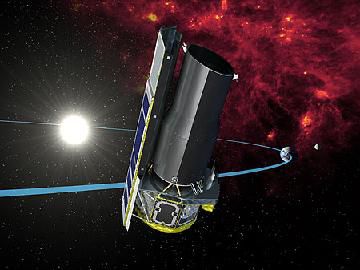-
 Viking
Viking
-
 Electroconvulsive therapy
Electroconvulsive therapy
-
 Methyl bromide
Methyl bromide
-
 Skipjack
Skipjack
-
 Crustacean
Crustacean
-
 Cryoturbation
Cryoturbation
-
 Hypothesis
Hypothesis
-
 Salt
Salt
-
 Nitrosamine
Nitrosamine
-
 Precautionary principle
Precautionary principle
-
 Balm
Balm
-
 Ovulation
Ovulation
-
 Kernel
Kernel
-
 Intensity
Intensity
-
 Extra-uterine pregnancy
Extra-uterine pregnancy
-
 CD-R
CD-R
-
 Hydrogen fuel cell and electric engine
Hydrogen fuel cell and electric engine
-
 Host plant
Host plant
-
 URL
URL
-
 Acid
Acid
-
 Keplerian motion
Keplerian motion
-
 Service tree
Service tree
-
 Neutrino
Neutrino
-
 Xbox Live
Xbox Live
-
 Position isomerism
Position isomerism
-
 Monosaccharides
Monosaccharides
-
 Direct access
Direct access
-
 Validation
Validation
-
 Geometric coordinates
Geometric coordinates
-
 GSS-API
GSS-API
Spitzer
The Spitzer space telescope (infrared observatory) was placed in orbit on 25 August 2003 by a Boeing Delta II rocket launched from the American base at Cape Canaveral (Kennedy Space Center). The planned service life was two and a half years, but this was extended until the liquid helium ran out in 2009. Spitzer completes the NASA range of space telescopes: Hubble, Chandra and Compton (taken out of orbit in to 2000).
From its heliocentric orbit with its back to the Sun, it has been studying the formation of stars and planets. It has observed the universe as it was billions of years ago and should help scientists to determine how and when the first objects were formed, as well as their composition.
It can also discover objects never observed before because they were hidden by the interstellar dust, such as the most distant stars and galaxies, and observe the coldest objects in the Solar System (outer planets, asteroids and other small bodies) and the disks of dust around young stars (proto-planetary disks).
The telescope has an 85 centimetre mirror and three cryogenically cooled instruments: a near and mid infrared camera, a spectrograph to analyse all infrared wavelengths and a photometer to collect information in the far infrared region.
 Artist's impression of Spitzer.
Artist's impression of Spitzer.
Latest
Fill out my online form.



